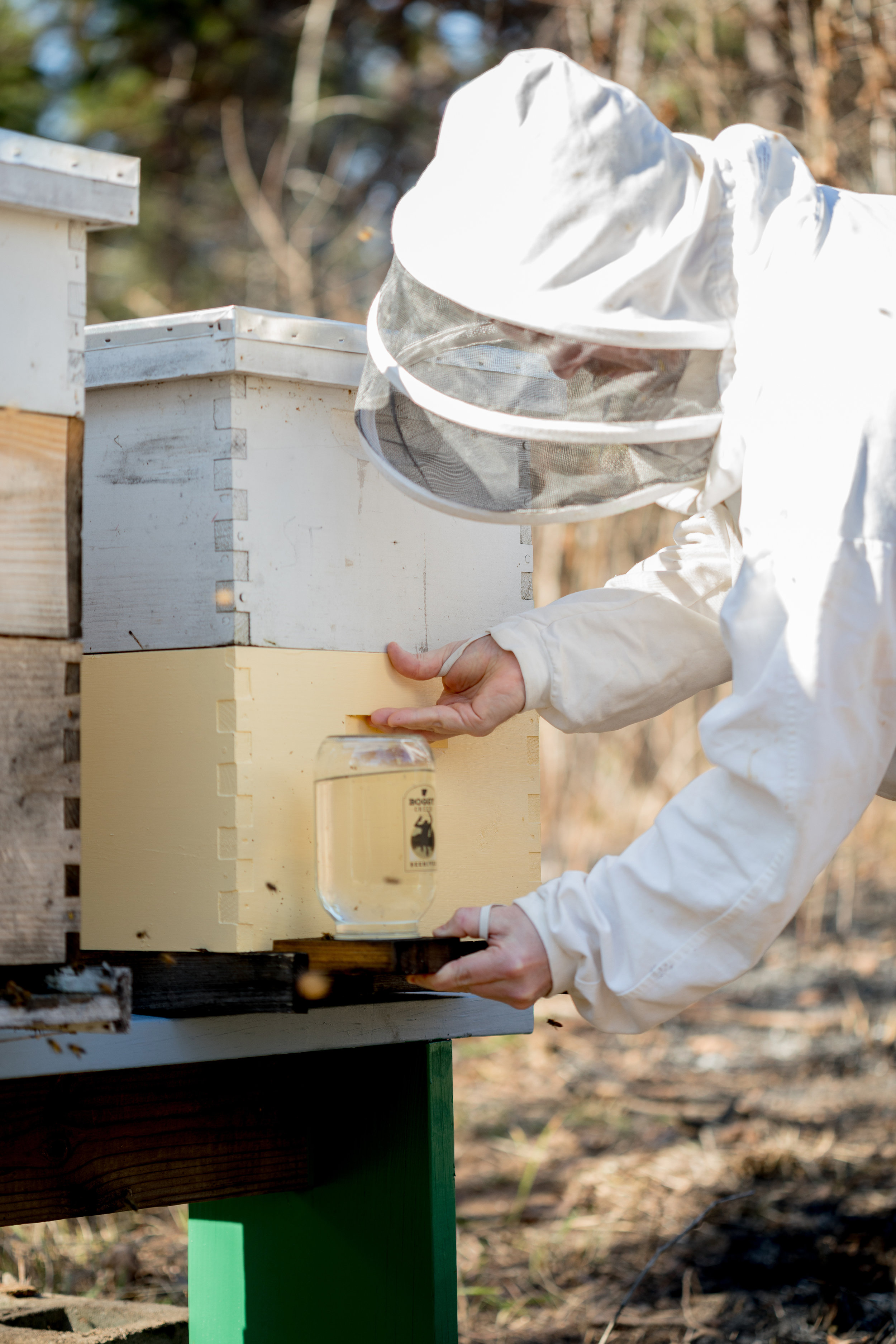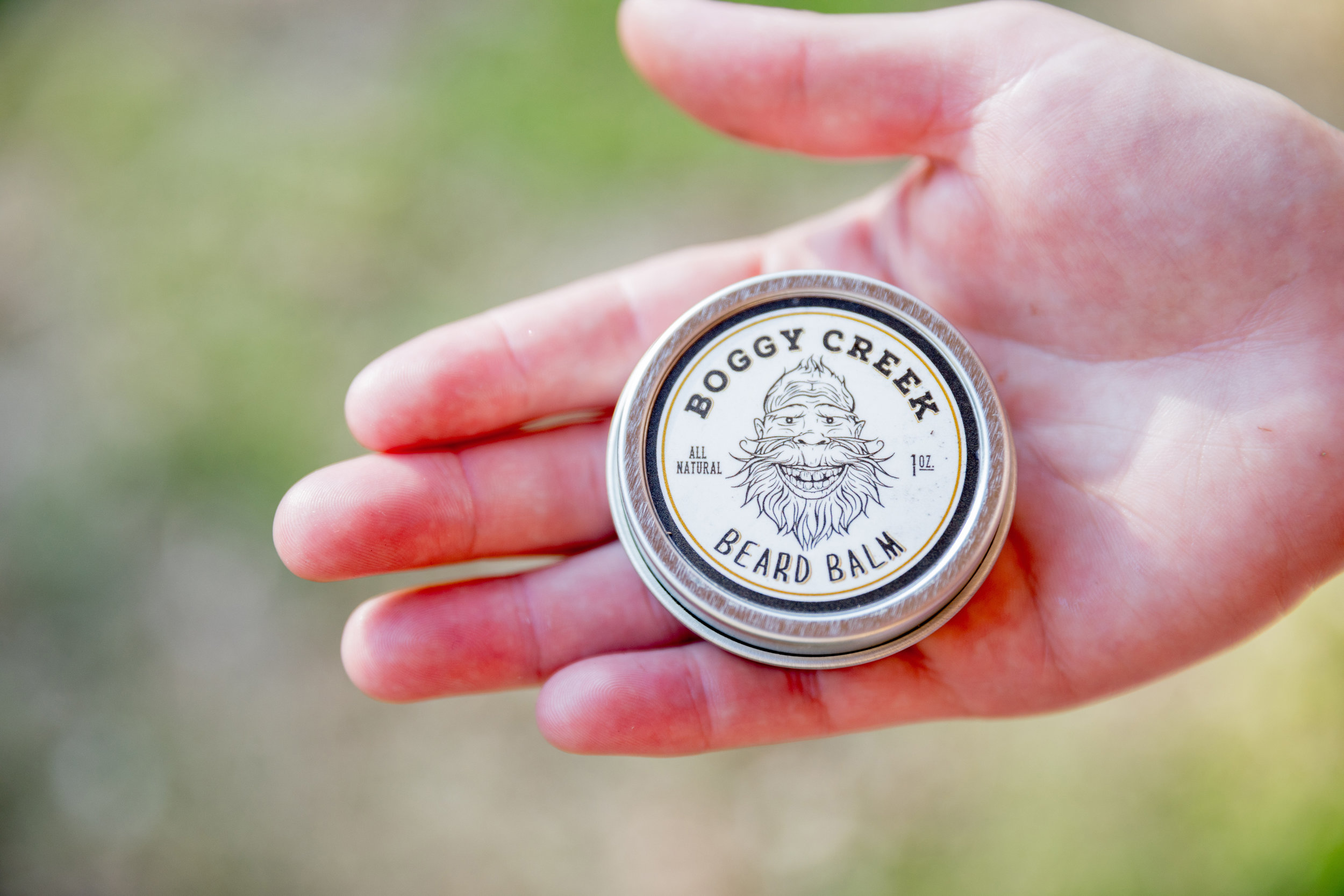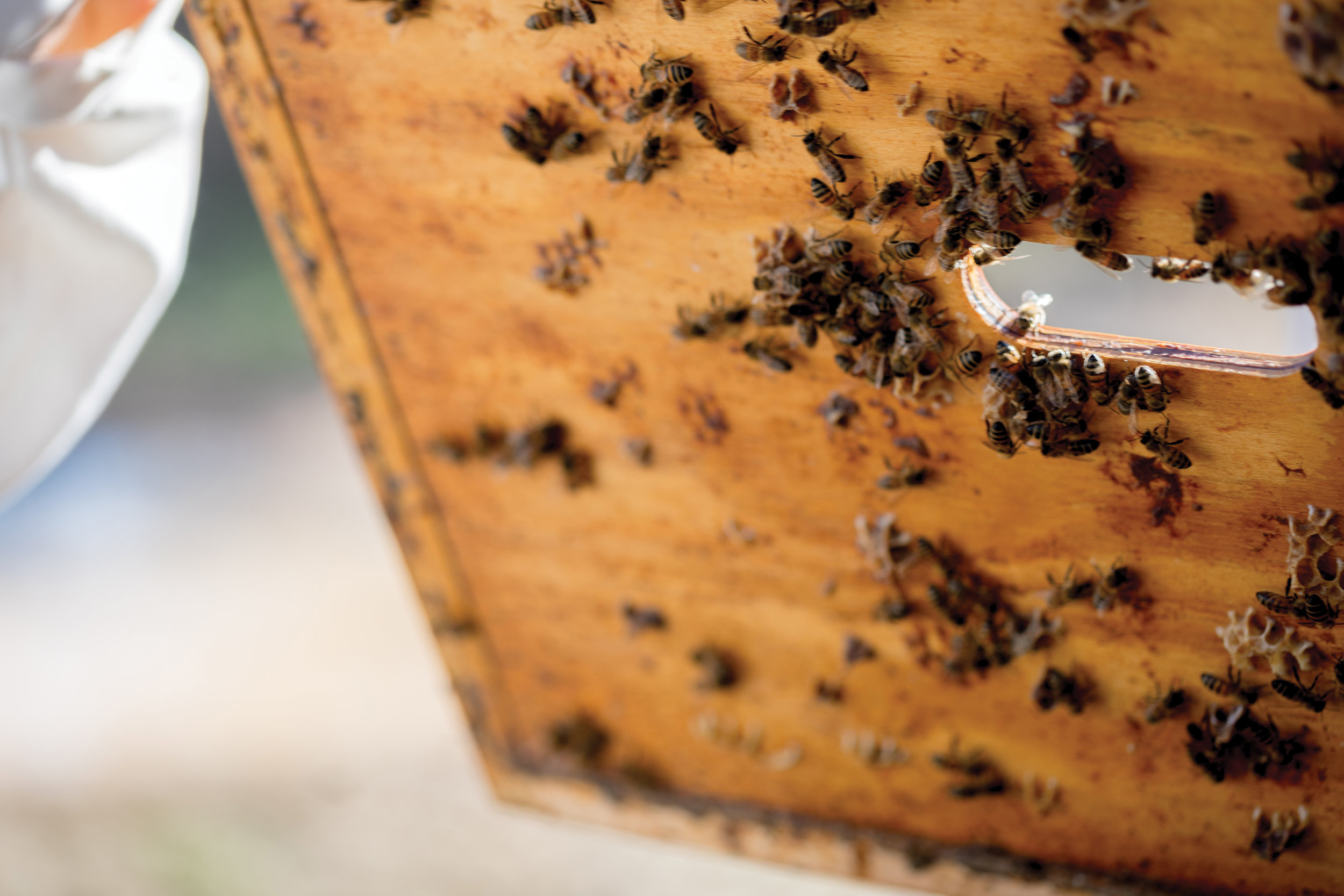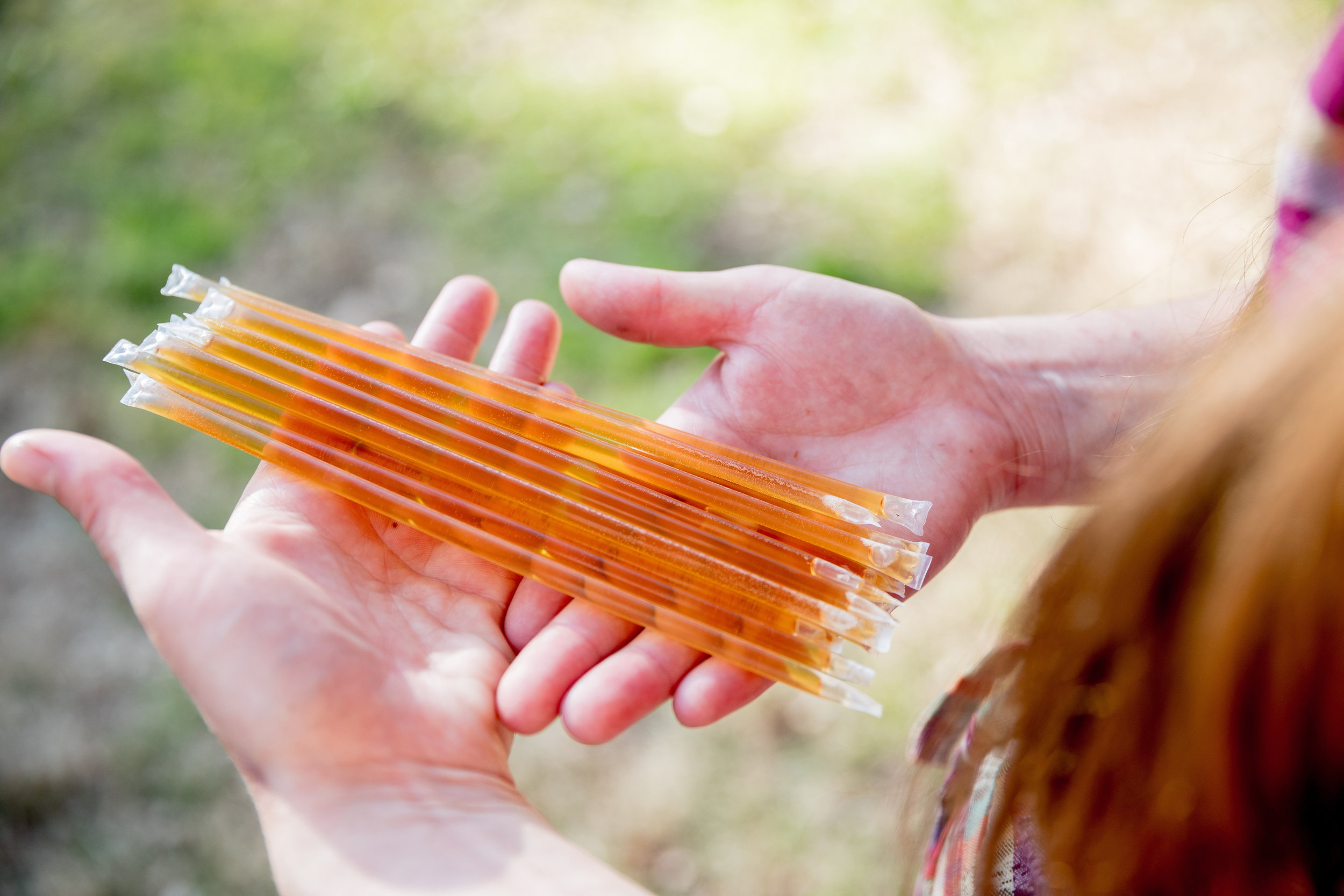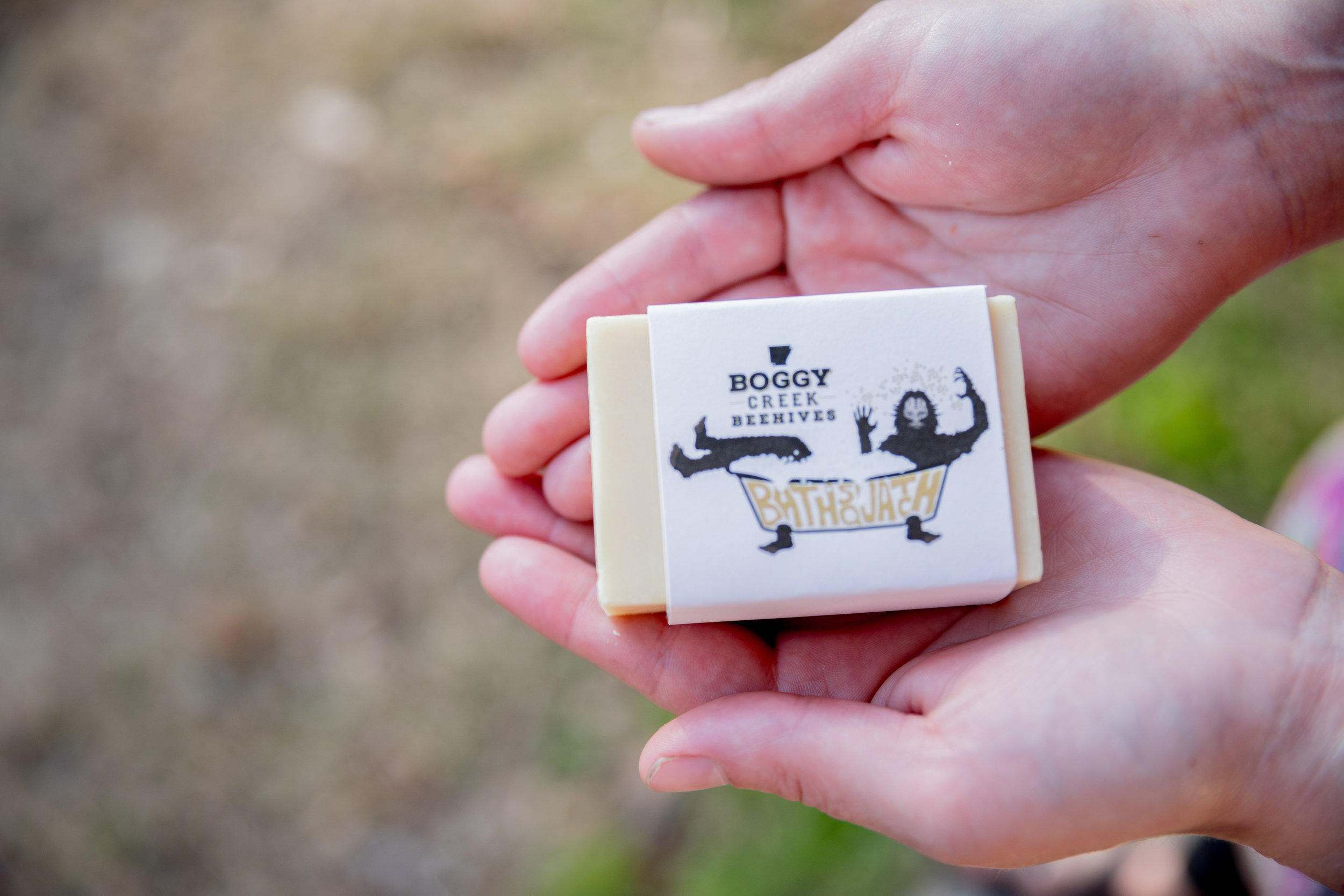The Buzz About Bees
/BOGGY CREEK BEEHIVES SUPPORTS HEALTHY HABITATS FOR BEES AND LOCAL CRYPTIDS
by RACHEL HORNE | photos by MOLLY MINTER
Clint Harris is, as he puts it, a bee nerd. With a side job as a beekeeper, he says he enjoys just being so close to something that could sting. The Fouke, Arkansas, native has a love of talking about all things bees, from the joys of honey to the challenges of pests. He and other locals Scotty Watson, Emily Greene, and Carla Watson run Boggy Creek Beehives, which boasts a mission statement on its website of supporting a healthy habitat for both bees and local cryptids.
While Clint and his team are still relative newcomers to the bee business, he does have a history with the insects. “My grandfather kept bees, and I had an interest in bees,” he said. “I got a hive probably about 2010, and Scotty got an interest in bees, too. About three years ago, we were all sitting around. Scotty, Emily, and I were talking about starting a business in beekeeping and utilizing some of the local life, and it went from there.”
That local infusion came in the form of the business’ mascot – a lumbering yet friendly sasquatch stemming from Fouke legends of the Boggy Creek Monster. The monster was made famous by the 1972 docudrama, The Legend of Boggy Creek. Like the decline in bees, sightings of the monster have become scarce in recent years, yet the film’s popularity remains strong. “The film has this cult following a lot of people were into,” Clint said, “and we started getting a lot of orders from other states. It’s kind of an interesting subculture, the cryptozoologists. I guess we didn’t realize how many people were actually avid fans of the monster.”
While the monster remains elusive for reasons unknown, the decline in bee populations stems from colony collapse disorder, in which worker bees disappear for a variety of reasons. This staggering issue that the Boggy Creek Beehive team faced starting out and continues to face has no one solution, but they’ve worked hard to keep their colonies thriving. “I think it’s a little more delicate than what we had originally thought,” Clint said. “You have to crawl before you walk. We’ve been learning these past three years have been a huge learning curve.”
The team has lost several colonies during the last two winter seasons but was able to maintain several as well. The biggest foe comes from the varroa mites and hive beetles, pests which contribute to colony collapse disorder. “That’s a big portion,” Clint said. “Fighting the pests and trying to keep the bees healthy would be the biggest hurdle. We’ve lost some colonies, but it hasn’t been super devastating to us. When spring fully springs, hopefully we can get up to 10 colonies this year. We’re trying to build our numbers, but we’ve been struggling with keeping them alive and well, and that’s kind of been what we’ve been focusing on these past three years. That’s part of the game.”
To help overcome these obstacles, the Boggy Creek team works with other beekeepers, examining each other’s problems to help find solutions. The community shares a love of their craft, and particularly, a love of genuine honey. “That’s the best part – having a real honey product,” Clint said. “Honey is a lot of inverted sugar and stuff now, not real, raw honey. One of my favorite parts for sure is seeing people taste actual real, raw fresh honey. It’s cool to see people taste it and say it tastes so much different.”
The team is aiming to have a new batch of honey out in May, but their online shop is always stocked with beeswax products to help them purchase more bees and supplies. Clint hopes to further grow the business from what he and the team have learned, but he never expects to stop learning. “We haven’t been doing this for a very long period of time,” he said, “and we’re still trying to figure it out. If we’re still doing this by the time I’m 80, I’ll still be figuring things out then.”




